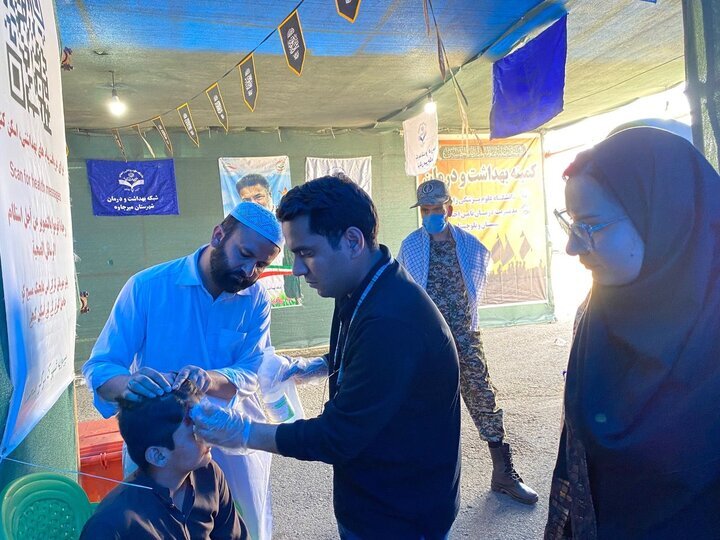Pakistani pilgrims being screened for dengue at borders

TEHRAN –Pakistani Arbaeen pilgrims traveling through Iran are being screened at borders for dengue fever, an official with the health ministry has said.
Dengue is a viral infection transmitted to humans through the bite of infected mosquitoes. Transmitted by Aedes mosquitos, the disease was placed among the top ten life-threatening diseases by the World Health Organization (WHO) transmitted by local carriers in 2019.
“Health stations have been established in Mirjaveh and Rimdan borders, in Sistan-Baluchestan Province, to screen Pakistanis to prevent the entry of travel-associated infectious diseases to the country,” ISNA quoted Jafar Miadfar, head of Iran’s Emergency Organization, as saying.
They will be checked for clinical symptoms such as fever, chills, low consciousness, and skin rashes. Also, needed laboratory tests are implemented and infected individuals will be prevented from entering Iran, the official added.
Thanks to effective border control measures and quality healthcare, the number of people entering the country having dengue fever has significantly decreased compared to the previous months.
However, a decrease in temperature accompanied by the rains in autumn can contribute to the resurgence of the mosquito density, particularly in the affected areas.
“The most important factor that contributes to dengue transmission worldwide is climate change; increase and change in temperature has led to the outbreak of various infectious diseases including dengue fever,” IRNA quoted Hossein Farshidi, an official with the health ministry, as saying.
According to the World Health Organization (WHO) report, dengue fever cases in 2023 surged twofold globally, and the number of deaths caused by the disease also increased by the same factor.
Fortunately, since the outbreak of the disease, there has been no report of acute cases in Iran, and there is no reason to be concerned about the spread of the disease in the country, the official noted.
So far, Bandar Lengeh, southern Hormozgan province, has had the highest level of dengue-infected cases.
Luckily, the number of dengue cases has not increased in the area thanks to warm weather which is associated with a reduction in the Aedes density, Farshidi added.
The health ministry has implemented measures to address the probable increase in infected cases in autumn.
The ministry is also planning to develop a training package to inform individuals, particularly passengers, medical staff, and journalists of the ways to prevent, or manage dengue fever.
Sharp rise in cases
Cases of dengue fever have been so far identified in 128 countries, a sharp rise compared to 10 countries in 1960, Shahnam Arshi, an official with the health ministry has said.
Up to 400 people are affected with dengue fever each year, he said, adding that only 20 percent of patients have symptoms and 80 percent of dengue infections have mild or no symptoms.
A significant portion of transmission occurs through individuals with asymptomatic infections.
About half of the world's population is at risk, and this number is increasing annually due to global warming, climate change, and the rise in international travel.
About 70 to 75 percent of the cases are reported in Southeast Asia. Over the past years, the disease has spread to Indonesia, Bangladesh, India, Singapore, and Thailand.
Aedes aegypti is a more invasive mosquito that is more common in Iran. Due to the physiology of this mosquito, people in contaminated areas are told to wear clothes that cover most parts of their bodies in the first two hours of the morning and two hours before the evening, Arshi noted.
Transmission occurs two days before showing symptoms and two days after the fever.
The disease can spread from mosquitos to humans, from humans to mosquitos, and from humans to humans through blood transfusion, organ transplant, and mother to child in pregnancy.
MT/MG
